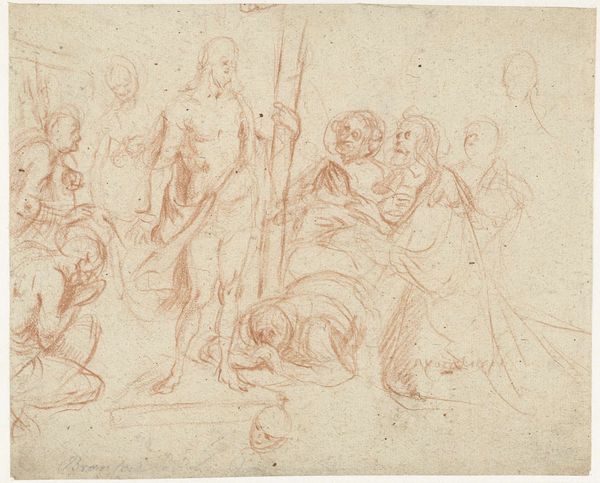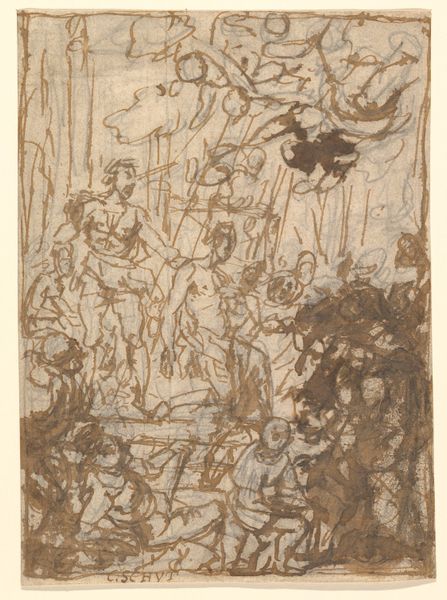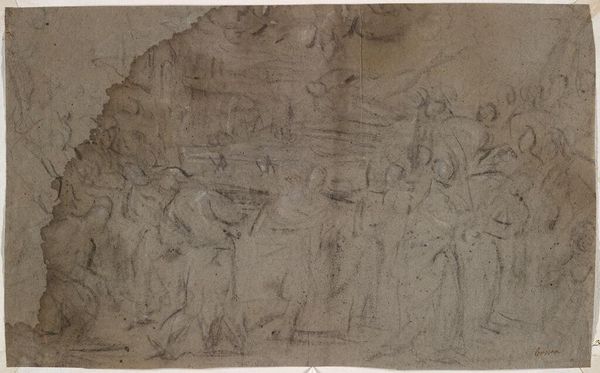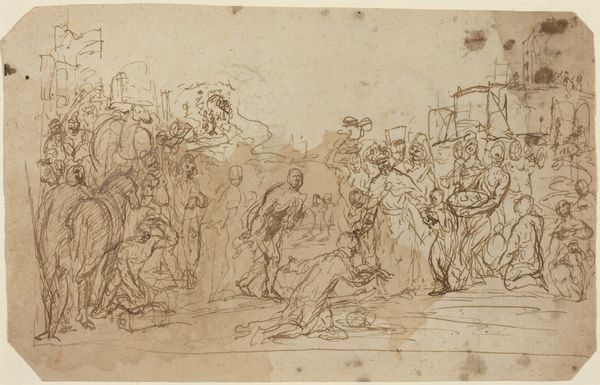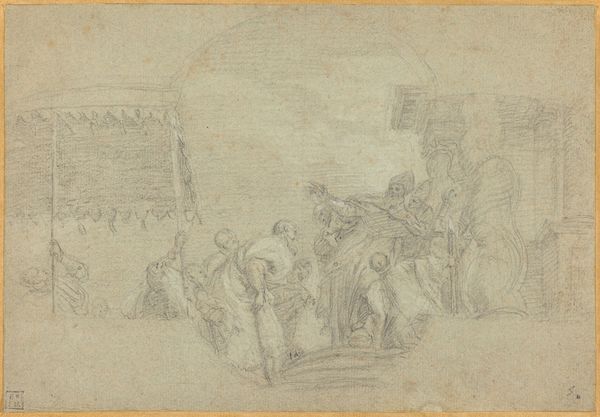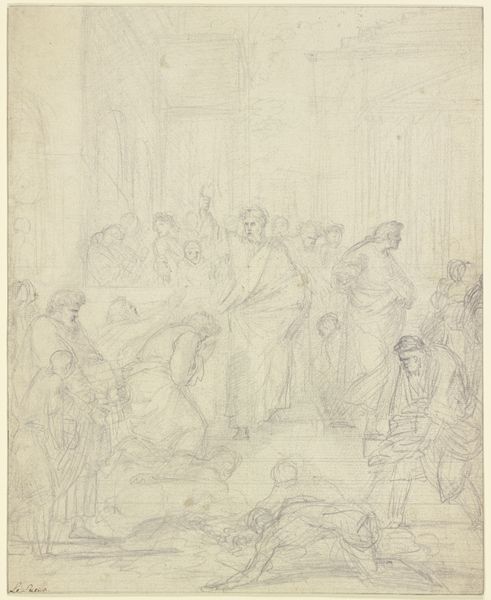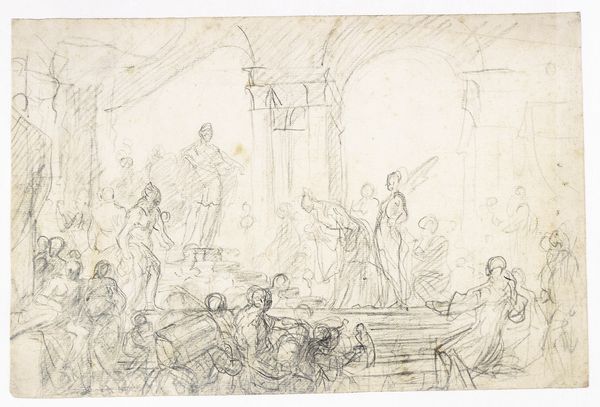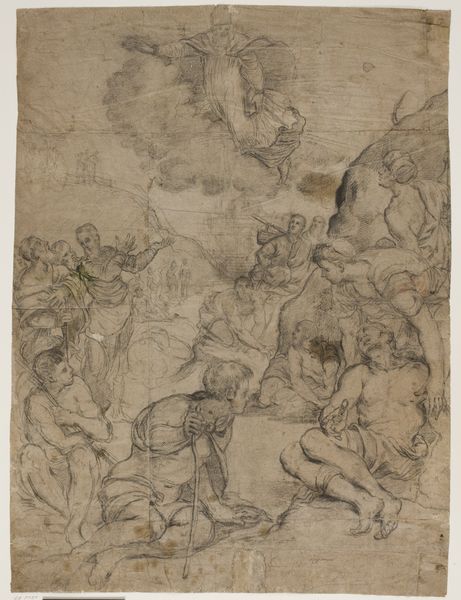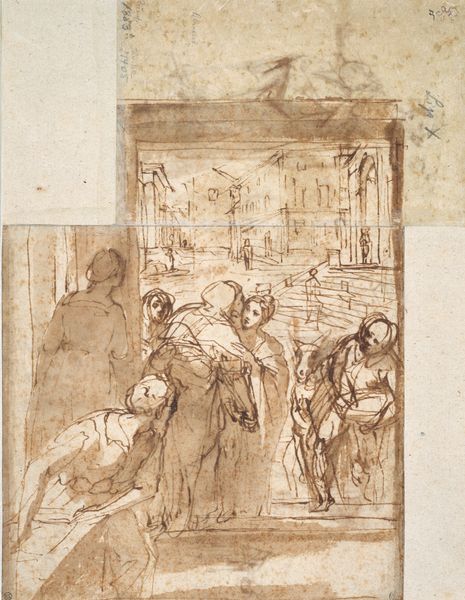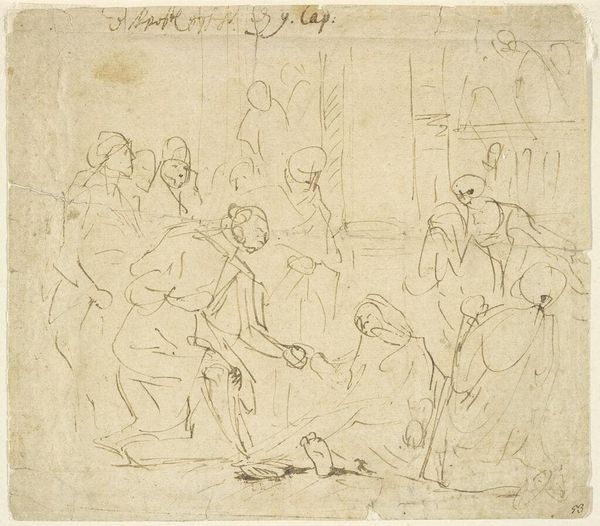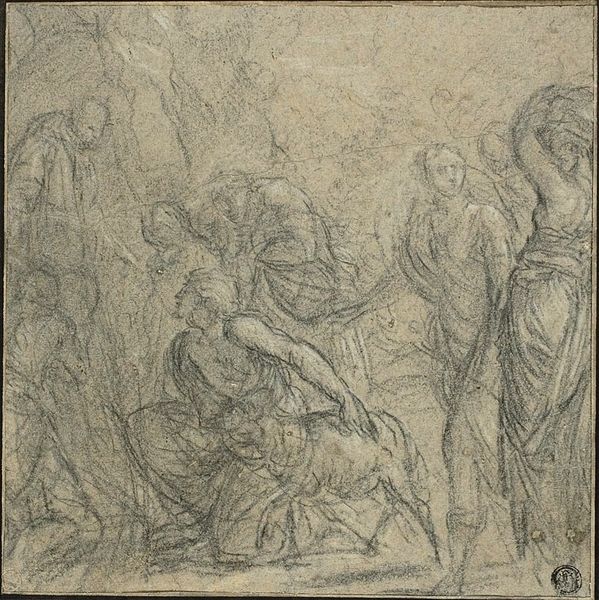
drawing, pencil
#
drawing
#
narrative-art
#
pencil sketch
#
figuration
#
11_renaissance
#
pen-ink sketch
#
pencil
#
history-painting
Dimensions: height 216 mm, width 197 mm
Copyright: Rijks Museum: Open Domain
Editor: This pencil drawing, "The Martyrdom of Saint Lawrence," was made by Cristofano Allori after 1616. It's a flurry of figures, quite chaotic but undeniably capturing a sense of dramatic intensity. How do you interpret this work within its historical context? Curator: Well, this drawing allows us to grapple with the relationship between religious conviction and power. Saint Lawrence’s martyrdom, as depicted here, becomes a focal point for examining the social and political ramifications of faith in the face of oppressive regimes. Do you notice the active participation of the crowd? Editor: Yes, they are everywhere! What does it say about the role of the audience in perpetuating violence or challenging injustice? Curator: Exactly. Think about how this scene might reflect anxieties surrounding religious authority and the potential for its abuse. Allori lived during a time when the Catholic Church was consolidating power, sometimes through violent means. Editor: So the drawing becomes a lens through which to question the legitimacy of those structures? The emphasis is less on the saint’s piety and more on the violent systems at play? Curator: Precisely. Consider also how Allori, as a male artist, depicts this saint and this moment. What are the implications of a male gaze upon an image of suffering linked to faith and devotion? Editor: I hadn't considered that! The act of depiction itself becomes a kind of statement about power and control. It seems this seemingly simple sketch has far deeper social and political resonances than I first realised. Curator: Indeed. It shows how a single image can be a powerful tool for social commentary, inviting us to critically examine historical narratives and their ongoing relevance.
Comments
No comments
Be the first to comment and join the conversation on the ultimate creative platform.
